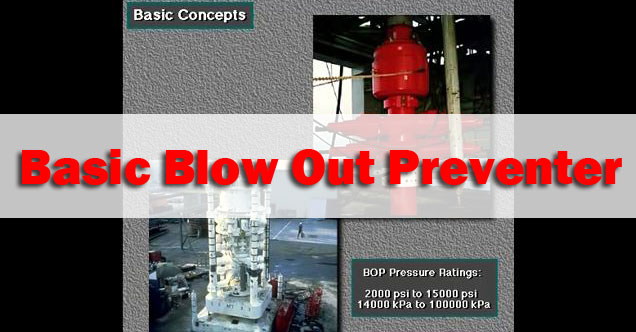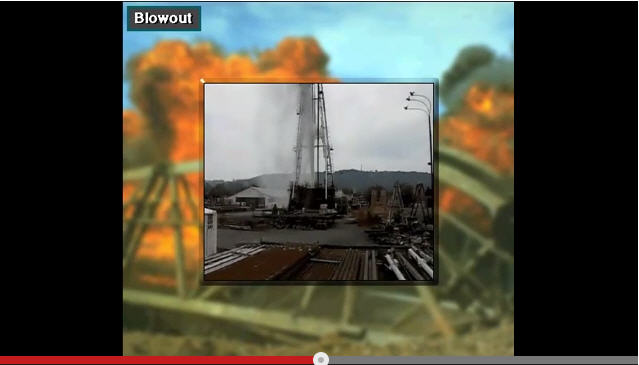Blow Out Preventer is one of the most critical equipment on the rig therefore it is very important that you need to understand it. This VDO demonstrates the basic of BOP with a lot of colorful pictures which will help you learn about it. We also add full VDO transcript in order to help people fully understand this topic. We wish you would love this.
Full VDO Transcript Deails

The blowout preventer, BOP stack, consists of several large valves stacked on top of each other. These large valves are called blowout preventers. Manufacturers rate BOP stacks to work against pressures as low as 2m000 pounds per square inch or psi and as high as 15,000 psi. That is about 14,000 kPa to over 100,000 kPa.
Rigs usually have two kinds of preventers, on top is an annular preventer it is called an annular preventer because it surrounds the top of the well bore in the shape of a ring or an annulus. Below the annular preventer are ram preventers. The shutoff valves in RAM preventers close my forcing or ramming themselves together.
The choke line is a line through which well fluids flow through the choke manifold when the preventers are closed. Even though the preventers shut in the well the core members must have a way to remove or circulate the kick in the mud out of the well. When the BOP shut in the well, mud and formation fluids exit through the choke line to the choke manifold. The manifold is made up of special piping and valves. The most important valve is the choke.












